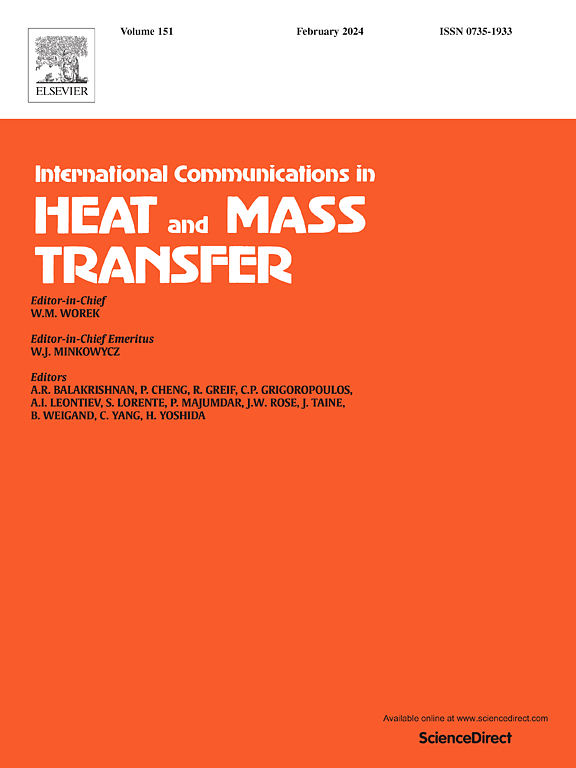Using evolutionary algorithms and group method of data handling ANN for prediction of the viscosity MWCNT-ZnO /oil SAE 50 nano-lubricant
IF 6.4
2区 工程技术
Q1 MECHANICS
International Communications in Heat and Mass Transfer
Pub Date : 2025-02-26
DOI:10.1016/j.icheatmasstransfer.2025.108749
引用次数: 0
Abstract
This study looked at ANNs' ability to predict the rheological properties of MWCNT-ZNO / Oil SAE 50 nano lubricant. Five artificial intelligence algorithms—Group Method of Data Handling (GMDH), Extreme Gradient Boosting (XGBoost), Multivariate Adaptive Regression Splines (MARS), Support vector machine (SVM), and Multilayer Perceptron (MLP)—were employed in this work to forecast this nanofluid. The most optimum objective function (μnf) as an output is the foundation of algorithms used in artificial intelligence. This capacity is developed so that the values predicted by ANN were more consistent with the laboratory numbers by combining GMDH with the metaheuristic approach. This combination enables the metaheuristic algorithm to optimize the evaluation indices and get the predicted data closer to the experimental data by using the GMDH activation parameters as input. For optimization, three metaheuristic algorithms are used, and the combination of GMDH and MOGWO produced the best results. Ultimately, the finest condition that could be achieved is found to have the following input data values: share rate (γ), temperature (T), and solid volume fraction (φ): 0.0625 %, 50 °C, and 5499.6783 s−1 correspondingly.
求助全文
约1分钟内获得全文
求助全文
来源期刊
CiteScore
11.00
自引率
10.00%
发文量
648
审稿时长
32 days
期刊介绍:
International Communications in Heat and Mass Transfer serves as a world forum for the rapid dissemination of new ideas, new measurement techniques, preliminary findings of ongoing investigations, discussions, and criticisms in the field of heat and mass transfer. Two types of manuscript will be considered for publication: communications (short reports of new work or discussions of work which has already been published) and summaries (abstracts of reports, theses or manuscripts which are too long for publication in full). Together with its companion publication, International Journal of Heat and Mass Transfer, with which it shares the same Board of Editors, this journal is read by research workers and engineers throughout the world.

 求助内容:
求助内容: 应助结果提醒方式:
应助结果提醒方式:


